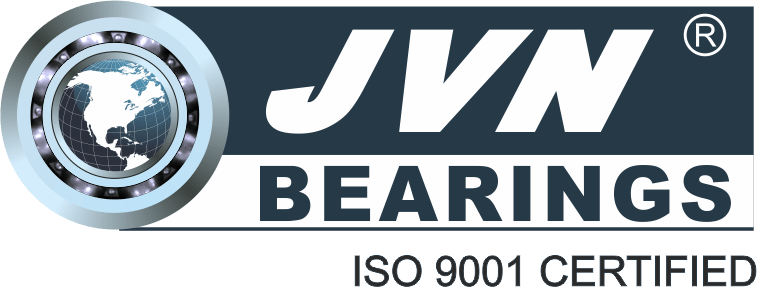JVN Bearings, Shop No F6,
1st Floor, Ruby Commercial Centre,
Mangalore, 575002
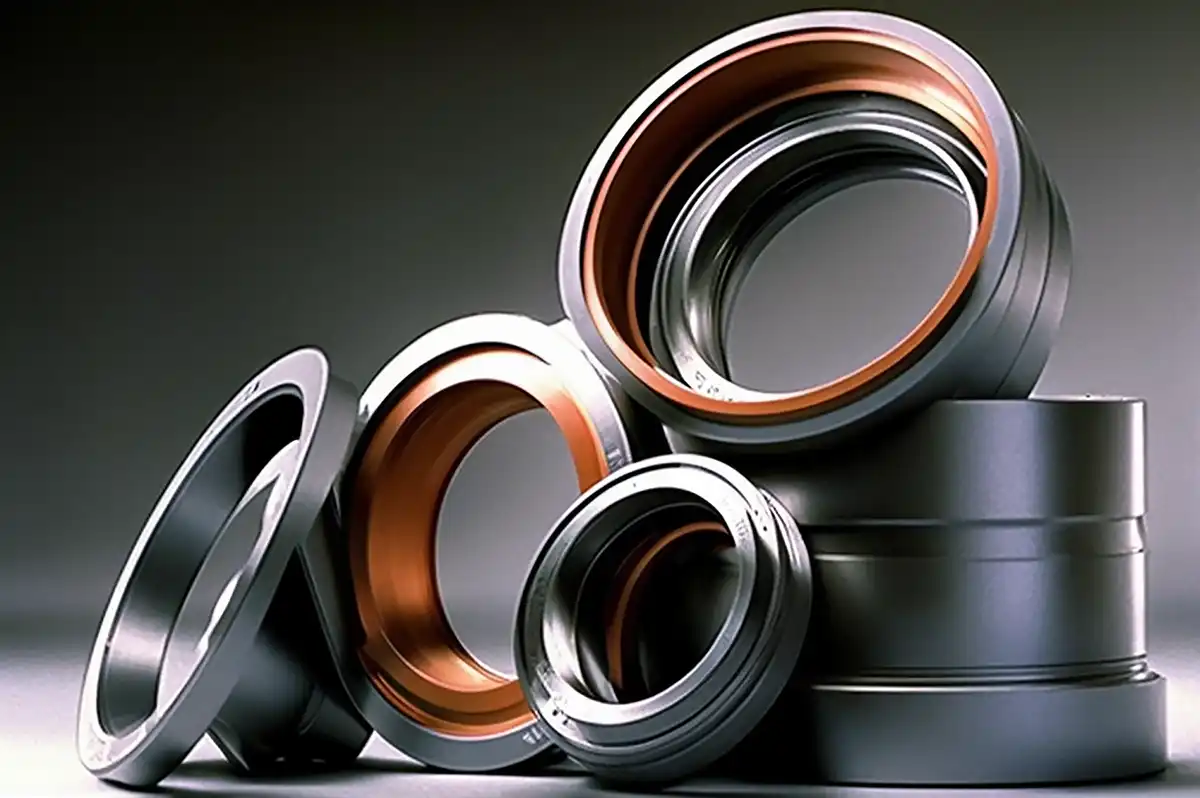
There are no ideal bearing materials – they can be made of metals, plastics, or composite materials depending on the type of bearing, application, speed, load and operating conditions. The method of lubrication is also a key factor. It is critical to consider that bearing material is merely one detail in the process of bearing selection, and even the costliest bearings cannot assure a successful performance if other design principles are ignored.
What organizations sets the standards for Bearing ?
The American Iron and Steel Institute (AISI) is an organization that sets standards for the steel industry in the United States and promotes the use of steel in various applications. The AISI designation system is used to identify and classify different types of steel based on their chemical composition and other properties. The AISI system is widely recognized and used in the United States and other countries as a standard for identifying different types of steel.
Japanese Industrial Standards (JIS) is a system of standards used for industrial activities in Japan. JIS covers a wide range of materials and industries, including steel, nonferrous metals, machinery, energy, and many others. JIS standards for steel materials include specifications for hot-rolled steel plates, sheets, and strips; cold-reduced steel plates, sheets, and strips; steel pipes; steel tubes; and other steel products.
Deutsche Industrie Norm (DIN) is a German standard organization that develops and publishes technical standards for various materials, products, and processes.
GB (Guobiao) is the national standard of the People’s Republic of China, which is also known as Chinese National Standards (CNS). These standards cover a wide range of areas, including industry, agriculture, and service sectors. GB standards are divided into two categories: mandatory and recommended. Mandatory standards are those that are legally required to be followed in China, while recommended standards are voluntary but often used as a basis for quality control and product testing. GB standards cover a wide range of industries, from food safety to construction materials to medical devices.
Types of Bearing Materials
Steel Bearing Materials
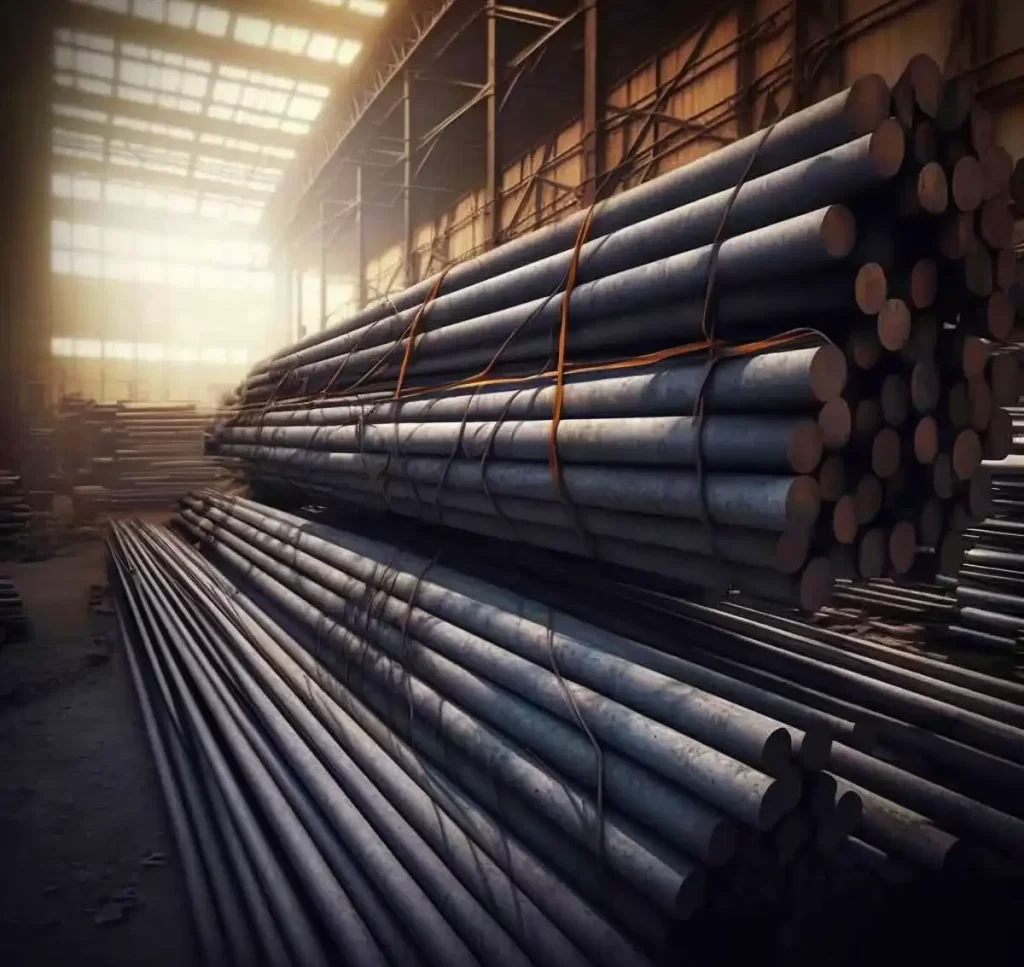
- Chrome Steel SAE 52100: The most commonly used material for load carrying components in ball bearings and roller bearings. The chemical composition of this steel has high carbon and about 1.5% chromium content. Through heat treatment and stringent processing the finished bearings have a good fatigue life, high strength and resistance to cracking and burring. SAE 52100 is an excellent general purpose bearing steel with a typical surface hardness ranging from 60-64 on the Rockwell Harness Scale (Rc). The corrosion resistance of chrome steel is poor because of low chromium content. The surfaces of the bearings must be protected with a coating of rust inhibitor or oil to stop oxidation.
- Strengths: excellent wear resistance, high hardness, good toughness, good dimensional stability, and high fatigue strength.
- Weaknesses: low corrosion resistance and poor machinability.
- Applications: ball bearings, roller bearings, and other high-load, low-speed applications where durability and reliability are critical.
Chemical Composition of Chromium Steel:
| Designation (Country) | C% (Carbon) | Si% (Silicon) | Mn% (Manganese) | P% (Phosphorous) | Cr% (Chromium) | Mo% (Molybdenum) | Ni% (Nickel) | S% (Sulfur) |
| AISI 52100 (USA) | .95-1.1 | .15-.35 | .5 max | .012 max | 1.3-1.6 | .08 max | .25 max | 0.25 max |
| 100CR6 (Germany) | .95-1.1 | .15-.35 | .25-.45 | .03 max | 1.35-1.65 | .1 max | – | 0.2 max |
| SUJ2 (Japan) | .95-1.1 | .15-.35 | .5 max | .025 max | 1.3-1.6 | .08 max | .25 max | 0.25 max |
| GCR15 (China) | .95-1.05 | .15-.35 | .25-.45 | .027 max | 1.4-1.65 | .1 max | .23 max | 0.2 max |
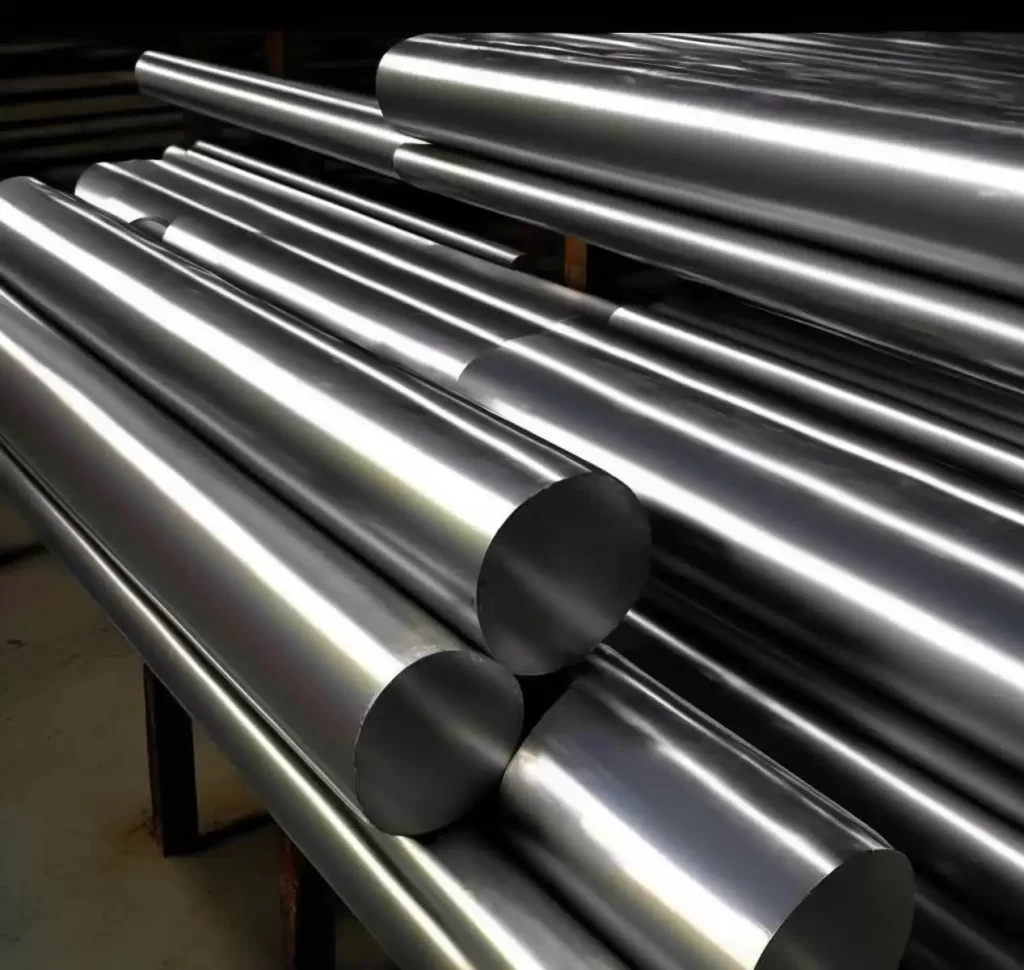
- AISI 440C: High carbon martensitic stainless steel commonly used in load carrying components in ball bearings and roller bearings. With a high carbon and chromium content, AISI 440C offers good fatigue life, high strength, and resistance to cracking and burring. It has a typical surface hardness ranging from 58-62 on the Rockwell C scale, which is similar to SAE 52100. In addition, AISI 440C has good corrosion resistance compared to other bearing materials, making it suitable for applications in harsh environments. However, like SAE 52100, the surfaces of AISI 440C bearings must be protected with a coating of rust inhibitor or oil to prevent oxidation. Some common applications of AISI 440C include surgical instruments, aerospace components, and high-performance bearings for industrial equipment, motorsports, and marine applications.
- Strengths: excellent corrosion resistance, high hardness, good toughness, and good dimensional stability.
- Weaknesses: poor machinability and lower impact resistance than other stainless steels.
- Applications: knife blades, surgical instruments, bearings, and other applications where high corrosion resistance and good edge retention are important.
Chemical Composition of AISI 440C:
| Designation (Country) | C% (Carbon) | Si% (Silicon) | Mn% (Manganese) | P% (Phosphorous) | Cr% (Chromium) | Mo% (Molybdenum) | Ni% (Nickel) | S% (Sulfur) |
| AISI 440C (USA) | 0.95-1.20 | 1.00 max | 1.00 max | 0.040 max | 16.00-18.00 | 0.75 max | 0.50 max | 0.030 max |
| X105CrMo17 (Germany) | 0.95-1.20 | 1.00 max | 1.00 max | 0.040 max | 16.00-18.00 | 0.75 max | 0.50 max | 0.030 max |
| SUS440C (Japan) | 0.95-1.20 | 1.00 max | 1.00 max | 0.040 max | 16.00-18.00 | 0.75 max | 0.60 max | 0.030 max |
| 9Cr18Mo (China) | 0.95-1.20 | 1.00 max | 1.00 max | 0.035 max | 17.00-19.00 | 0.75 max | 0.60 max | 0.030 max |
- AISI M50: AISI M50 is a high-speed steel that is commonly used in the manufacture of precision bearings and other high-performance components. It contains a high percentage of cobalt and tungsten, along with carbon, chromium, and molybdenum, which give it exceptional wear resistance, high hardness, and excellent toughness. AISI M50 is capable of retaining its properties at high temperatures and can withstand extreme mechanical stress, making it ideal for use in aerospace and other demanding applications. Applications include Aerospace bearings, high-performance cutting tools, gearboxes, turbine blades, and other components that require high strength, wear resistance, and toughness at high temperatures.
- Strengths: excellent wear resistance, high hardness, good toughness, and good dimensional stability.
- Weaknesses: high cost and relatively low corrosion resistance.
- Applications: aerospace bearings, turbine engine components, and other high-load, high-speed applications where wear resistance and durability are critical.
Chemical Composition of AISI M50:
| Designation (Country) | C% (Carbon) | Si% (Silicon) | Mn% (Manganese) | P% (Phosphorous) | Cr% (Chromium) | Mo% (Molybdenum) | Ni% (Nickel) | Co% (Cobalt) | S% (Sulfur) |
|---|---|---|---|---|---|---|---|---|---|
| AISI M50 (USA) | 0.80-0.90 | 0.20-0.40 | 0.15-0.40 | 0.025 max | 3.75-4.50 | 4.50-5.50 | 0.30 max | 8.00-10.00 | 0.030 max |
- AISI 8620: AISI 8620 is a low-alloy steel that is commonly used in the manufacture of gears, shafts, and other parts requiring high strength and toughness. It contains a combination of carbon, manganese, chromium, nickel, and molybdenum, which give it good hardenability, strength, and wear resistance. AISI 8620 can be heat treated to achieve a range of mechanical properties, making it suitable for a wide variety of applications in the automotive, construction, and machinery industries.
- Strengths: good strength, toughness, and hardenability, good machinability, and good wear resistance.
- Weaknesses: lower hardenability compared to some other alloy steels and lower corrosion resistance.
- Applications: Gears, shafts, couplings, and other parts requiring high strength, durability, and resistance to wear and fatigue. Also used in the automotive industry for components such as camshafts, steering knuckles, and transmission parts.
Chemical Composition of AISI 8620:
| Designation (Country) | C% (Carbon) | Si% (Silicon) | Mn% (Manganese) | P% (Phosphorous) | S% (Sulfur) | Ni% (Nickel) | Cr% (Chromium) | Mo% (Molybdenum) |
|---|---|---|---|---|---|---|---|---|
| AISI 8620 (USA) | 0.18-0.23 | 0.15-0.35 | 0.70-0.90 | 0.035 max | 0.040 max | 0.40-0.70 | 0.40-0.60 | 0.15-0.25 |
Conclusion
- High-quality materials are important for bearings to ensure long-term reliability and performance of equipment.
- Some manufacturers use low-grade carbon steel for their bearings to reduce costs, but this can lead to premature failure and expensive repairs in the long run.
- One of the most common low-grade carbon steels used for bearings is AISI 1010, which has a low carbon content and is prone to wear and deformation under heavy loads or high speeds.
- Another low-grade carbon steel used for bearings is AISI 1020, which is also prone to wear and deformation, particularly in high-speed applications, and has lower hardness and strength than higher-quality bearing steels.
- Chinese-made bearings may also be manufactured using low-quality carbon steel with a high sulfur content, poor machinability, and lower strength and durability than higher-quality bearings.
- Customers should opt for higher-quality bearing materials such as SAE 52100 or AISI 440C, which have higher carbon and chromium content for improved strength, durability, and wear resistance.
- Investing in higher-quality bearings can ensure long-term reliability and performance of equipment, ultimately saving money and avoiding costly repairs.
Plastic Bearing Materials
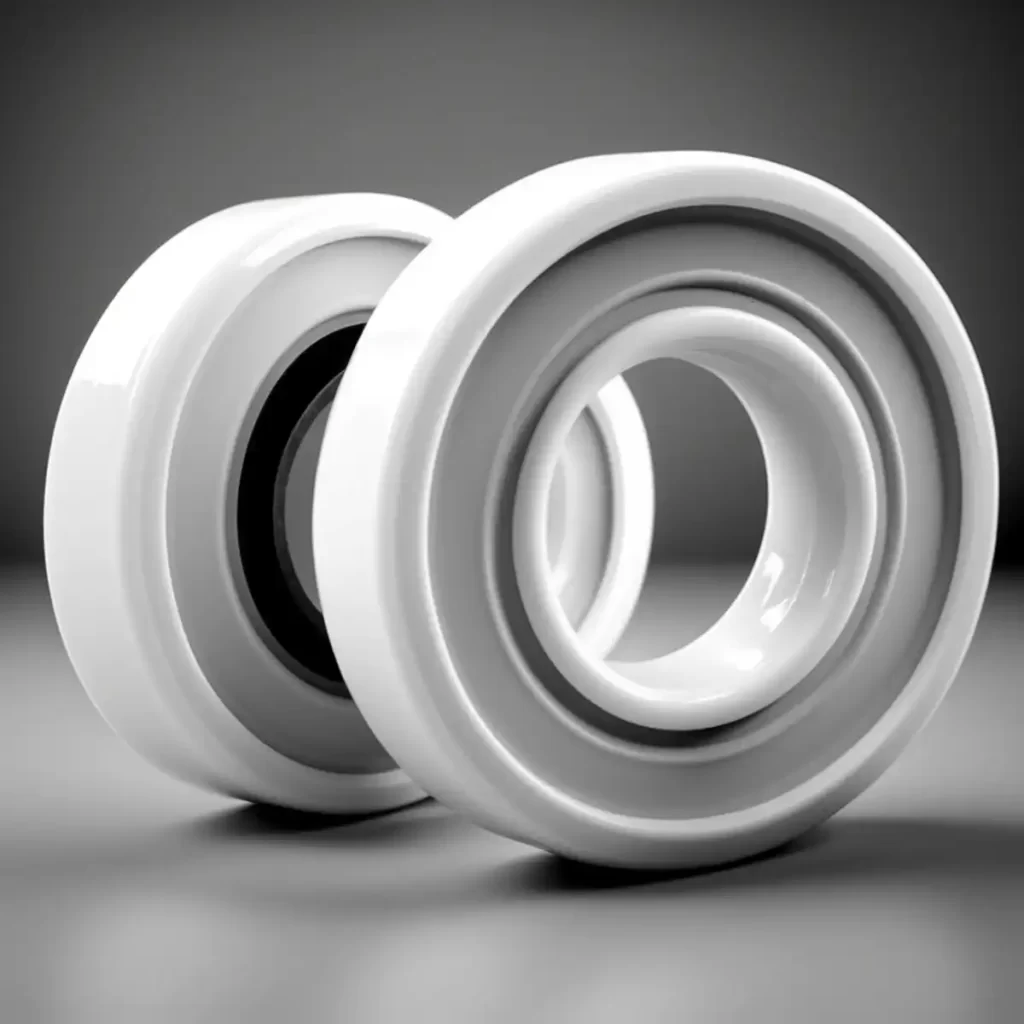
Plastic bearings are used in a variety of applications, ranging from food processing equipment to medical devices. Here are some common plastic bearing materials and their properties:
- Acetal (POM): Acetal is a thermoplastic that has good wear resistance, low friction coefficient, and high stiffness. It can operate at temperatures up to 180°F (82°C) and has good chemical resistance. Acetal is often used in applications that require high precision, such as conveyor systems and automotive components.
- Strengths: good wear resistance, low friction, high stiffness, and chemical resistance.
- Weaknesses: low impact resistance and poor resistance to high temperatures.
- Applications: Used in applications that require good dimensional stability and resistance to chemicals and moisture, such as pump components, valve seats, and electrical insulators.
- Nylon: Nylon is a thermoplastic that has good strength, toughness, and wear resistance. It can operate at temperatures up to 250°F (121°C) and has good chemical resistance. Nylon is often used in applications that require high strength and impact resistance, such as conveyor systems and material handling equipment.
- Strengths: good strength, toughness, wear resistance, and chemical resistance.
- Weaknesses: poor dimensional stability and high water absorption.
- Applications: seals, gaskets, and electrical insulators.
- PEEK (Polyetheretherketone): PEEK is a high-performance thermoplastic that has excellent mechanical and chemical properties. It can operate at temperatures up to 500°F (260°C) and has excellent chemical resistance. PEEK is often used in applications that require high strength, stiffness, and chemical resistance, such as aerospace and medical components.
- Strengths: excellent strength, stiffness, wear resistance, and chemical resistance.
- Weaknesses: high cost and poor impact resistance.
- Applications: medical and aerospace applications, such as implants and aircraft components.
- UHMWPE (Ultra-high-molecular-weight polyethylene): UHMWPE is a thermoplastic that has excellent wear resistance, low friction coefficient, and high impact resistance. It can operate at temperatures up to 180°F (82°C) and has good chemical resistance. UHMWPE is often used in applications that require high wear resistance and low friction, such as conveyor systems and material handling equipment.
- Strengths: excellent wear resistance, low friction, high impact resistance, and chemical resistance.
- Weaknesses: low stiffness and poor dimensional stability.
- Applications: Food processing and packaging applications, such as cutting boards and conveyor belts.
It is important to note that plastic bearings may not be suitable for high-load, high-speed applications due to their lower strength and stiffness compared to steel bearings. However, they are often preferred in applications where corrosion resistance, low friction, and lightweight are important factors.
Composite Materials
Composite bearing materials are made of a combination of materials, typically a polymer matrix and reinforcing fibers. The properties of composite bearings can vary depending on the specific materials used in their construction. Here are some examples:
- Polyamide (PA) – Glass Fiber Reinforced: This composite material is a type of plastic that has been reinforced with glass fibers. It is known for its high strength, stiffness, and abrasion resistance. PA-GF bearings are used in a variety of applications, including automotive engines, construction equipment, and industrial machinery.
- Strengths: high strength, stiffness, good wear resistance, and low coefficient of friction.
- Weaknesses: poor resistance to high temperatures and chemicals.
- Applications: automotive engines, construction equipment, industrial machinery.
- Polyimide (PI) – Carbon Fiber Reinforced: This composite material is made of a polymer matrix reinforced with carbon fibers. It is known for its excellent high-temperature performance and dimensional stability. PI-CF bearings are used in applications that require high-temperature resistance and dimensional stability, such as aerospace and industrial machinery.
- Strengths: high-temperature resistance, dimensional stability, high strength, and stiffness.
- Weaknesses: high cost and difficult to machine.
- Applications: aerospace, industrial machinery.
- PTFE (Polytetrafluoroethylene) – Glass Fiber Reinforced: This composite material is a type of plastic that has been reinforced with glass fibers. PTFE-GF bearings are known for their low coefficient of friction, high wear resistance, and resistance to chemicals and moisture. They are commonly used in food and beverage processing equipment, as well as in pumps and valves.
- Strengths: low coefficient of friction, high wear resistance, and resistance to chemicals and moisture.
- Weaknesses: poor load carrying capacity and poor dimensional stability.
- Applications: food and beverage processing equipment, pumps, and valves.
- PEEK (Polyetheretherketone) – Carbon Fiber Reinforced: This composite material is a type of thermoplastic that has been reinforced with carbon fibers. PEEK-CF bearings are known for their high-temperature resistance, excellent wear resistance, and high strength. They are commonly used in aerospace, automotive, and medical applications.
- Strengths: high-temperature resistance, excellent wear resistance, and high strength.
- Weaknesses: high cost and difficult to machine.
- Applications: aerospace, automotive, and medical.
Cage, Shield and Seal Materials
- The Cage / Retainer (if used) are usually made from different materials compared to the rings and balls. The cages are usually punch-pressed from brass strips (H62), steel 08 (SPCC), stainless steel (3Cr13 or 1Cr18Ni9), fiber reinforced phenolic resin ,plastics, etc.
- Shields are made with the material of Steel 10 or 08AI (SPCC), Stainless Steel (1Cr18Ni9).
- Seals are made with the material of Synthetic Rubber and Teflon.
